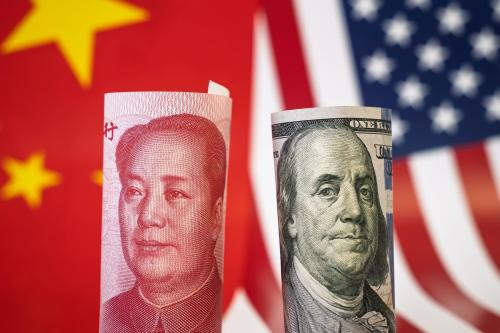In the wake of the Cuban revolution, many middle class Cubans emigrated to the United States. But in the intervening decades, Cuba’s universal public education has spawned new middle classes, of government officials, professional engineers and accountants, and in increasing numbers today, private entrepreneurs.
Here’s how many Cubans fit the category of “middle class.” Middle class can be defined by certain social achievements or values, such as educational attainment; women’s participation in the labor force; indices of economic security; and consumption baskets or aspirations:
• Education
For the Latin American middle class as defined in a major World Bank survey, the mean years of education was 10.4.[1] For all Cubans, the mean years of schooling is nearly the same (10.2).[2] Thus, if educational attainment—possessing human capital—is given a large weight in defining middle class, as is often the case, most Cubans would qualify.
• Female labor force participation
Female labor outside the home is a mark of modernity as well as a source of household income. In Latin American households considered middle class by the World Bank, roughly two-thirds of the women work. The female participation rate in Cuba is only moderately lower, at 60 percent.[3] More broadly, Cuba scores well in the “Gender Inequality Index” of the United Nations Development Program (UNDP), virtually tied for best performance in the Latin American and Caribbean region with Barbados and Costa Rica.
• Fertility rates (or size of households)
Lower fertility is associated with middle class status and Cuba displays the low rates characteristic of developed societies. Nearly 100 percent of Cuban women report access to contraception techniques and fertility rates are under 2.0, the lowest in the Western Hemisphere.[4]
• Home ownership and enrollment in social security systems
In these two indicators of economic attainment and security, Cuba scores highly, reporting that over 80 percent of Cubans own their homes (albeit too often in deteriorated status) and nearly all Cubans are enrolled in the national social security system.
So by several measures—such as educational attainment, women working outside the home, women’s access to contraception and reproductive rates, and common indices of economic security—Cuba looks very much like a middle class society.
But there is one measure whereby Cuba would certainly not qualify: access to individual consumer items. Frustrating for many Cubans, their homes lack all the “stuff”—an up-to-date basket of final consumption goods—associated with middle class consumerism. Few Cubans own their own cars or computers, any appliances they are lucky enough to possess are often in disrepair, and their access to well-stocked retail stores and private services is incipient only. As of 2010, a mere 19 percent of Cubans had telephones (fixed or mobile), compared for example to 97 percent in Costa Rica.[5]
Yet many Cubans display the middle class trait of aspiring to consume. As one wry young man noted, “We’re not comunistas anymore, we’re consumistas.”[6] Asked by the author for her goals in life, one Cuban in her early twenties blithely responded, “Of course we all want the same things: a car that starts, a smart phone, a computer with internet access, and a decent home.” Even if they cannot afford them, a surprising number of Cubans are aware of global brands, ranging from Nike shoes to Nestlé ice cream.[7] A common motivation for emigrating is the desire to experience the middle-class lifestyle associated with the consumer society.
There are few surveys of consumer tastes or of individual attitudes published in Cuba. But one recent academic publication confirmed what one might anticipate: that many Cubans are now pursuing strategies of upward social mobility. According to this study, these individualistic strategies seek advancement by movement into the private sector, by supplementing state incomes through moonlighting, and by the use of social networks. Upwardly mobile Cubans “offer an optimistic narrative, feel they are better off than their parents and will further improve their situations”[8]—perceptions and aspirations so characteristic of the middle classes worldwide.
The emerging private sector in Cuba—numbering as many as two million or 40 percent of the labor force—and these middle classes—consisting of the majority of Cubans by some characteristics—are already redefining the new post-Castro Cuba. The old narrative, that Fidel and Raul Castro had to pass from the scene before real change could occur, has been discredited by current trends.
Read Richard Feinberg’s report, Soft Landing in Cuba? Emerging Entrepreneurs and Middle Classes »
[1] Nancy Birdsall, A Note on the Middle Class in Latin America, op.cit., Table 6.
[2] UNDP, Human Development Index. In the UNDP’s education index (2012), Cuba ranked the highest for Latin America. See http://hdrstats.undp.org/en/tables/.
[3] Oficina Nacional Estadística (ONE), Anuario Estadístico de Cuba 2011, National Accounts, Table 7.20, “Other global indicators about population and labor resources in the national economy.”
[4] ONE, “Encuesta Nacional de Fecundidad, 2009.” Available at: www.one.cu/enf.htm.
[5] UNDP, Human Development Indicators. Available at: http://hdrstats.undp.org/en/indicators/112806.html.
[6] Quoted in Nick Caistor, Fidel Castro (London: Reaktion Books, 2013), p. 140.
[7] Emilio Morales and Joseph Scarpaci, Marketing without Advertising: Brand Preference and Consumer Choice in Cuba (Routledge, 2012).
[8] Mayra Espina Prieto and Viviana Togores González, op.cit. p. 280.
The Brookings Institution is committed to quality, independence, and impact.
We are supported by a diverse array of funders. In line with our values and policies, each Brookings publication represents the sole views of its author(s).


Commentary
Middle Classes in Socialist Cuba: Many More Than You Might Think
November 8, 2013